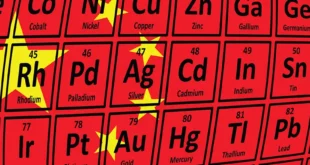The Chinese military has been holding more live-fire drills in the contested South China Sea this week, state media reported, while accusing the United States of “saber-rattling and making provocations.”
The military exercises come as Washington has amplified its concerns about China’s “aggressive actions.” This week the top U.S. diplomat vowed to ensure freedom of navigation in the disputed waterway.
The People’s Liberation Army (PLA) Daily quoted the Hainan Maritime Safety Administration as issuing navigation restriction notices for three different locations around Hainan, China’s largest island, which lies off the south coast of the mainland, because of the live-fire drills.
No further details were given but usually live-fire exercises are aimed at testing the troops’ combat preparedness, especially in amphibious landing scenarios.
At least two of the drills concluded Friday: one near Hainan and the other in the Beibu Gulf between China and Vietnam.
PLA Daily also carried a video which it said showed a naval frigate flotilla attached to the PLA Southern Theater Command on a recent, seven-day intensive live-fire exercise in the South China Sea. Drills included carrier-based aircraft landing, handling of floating mines and artillery firing, the report said, without giving a precise location.
There has been a steady flow of reporting in Chinese state media on military drills in the South China Sea, a potential flashpoint for conflict in the Indo-Pacific. China’s sweeping claims overlap with those of Brunei, Malaysia, the Philippines, Taiwan and Vietnam.
Last week, the Global Times reported that the PLA recently practiced live bomb drops and sea mine-laying on islands in the South China Sea using its most advanced H-6J strategic bombers.
Observers say an increasing number of military exercises have been conducted to send a message of deterrence to Taiwan and its ally the United States, which has stepped up its advocacy for a “free and open Indo-Pacific” as a key plank of its foreign and defense policies.
On Tuesday during a visit to Indonesia, U.S. Secretary of State Antony Blinken said there’s concern among countries in the region “about Beijing’s aggressive actions” and that the U.S. is “determined to ensure freedom of navigation in the South China Sea.”
It was Blinken’s first visit to Southeast Asia since he took office as the top U.S. diplomat in January. There’s also expectation that President Joe Biden will invite Southeast Asian leaders to Washington for a summit early next year.
Responding to Blinken’s speech, Chinese Foreign Ministry’s spokesman Zhao Lijan accused the U.S. of “saber-rattling and making provocations” by sending advanced military aircraft and vessels to the South China Sea.
On Tuesday, the South China Sea Strategic Situation Probing Initiative, a Beijing-based think tank, alleged that the U.S. Air Force sent an RC-135W spy plane on a “close-in reconnaissance mission alongside China’s coast,” near the locations of the PLA drills. It claimed there had been 94 such reconnaissance flights since November.
 Eurasia Press & News
Eurasia Press & News




